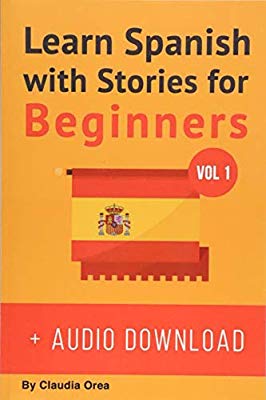
124 p.
To be honest, I had forgotten that I had ordered this as a Kindle book. I don’t have a Kindle as such (I do have a Kobo) and I only read Kindle books on my tablet. I started reading it, then joined in a group reading of La Distancia Entre Nosotros by Reyna Grande instead. Once I finished the novel, I remembered that I had this book half-read.
So I find myself in the position of being able to compare a ‘real’ book (albeit a Young Adult book) with a book consciously written for beginners. The ‘real’ book wins hands down. I found myself having to look up about 4-6 words per page in Grande’s book, and it was interesting that the further I went on, the fewer words I had to look up. Most of the words I needed to look up were verbs. Even if I didn’t recognize the word at first, I was able to work in out in context. In Orea’s short stories, on the other hand, there were many more words that were unfamiliar to me, and they were mostly nouns. Being short stories, and with short sentences, there were far fewer contextual cues. And I suppose that because it is an instructional text, there was a conscious decision to focus on ‘building vocabulary’, hence the long list of new words at the end of each story.
Several of the stories were in the present tense, which is fair enough for a beginners’ book. However, a number of the stories were either a) boring or b) downright weird. Take for example ‘Las Apariencas Engañan’ (Appearances Deceive). It’s about a man who pimps up his girlfriend to go cruising looking for men, except that the girlfriend is an alligator who eats them. Hmmm. However, I’m not a great short story fan in English either – especially when the short story is very short – and so I’m probably not the best judge.
The stories themselves are about 1500 words in length, and after each paragraph there is a vocabulary list. This is good, because you don’t have to go rummaging around at the back of the book or in a dictionary – the words are right there when you need them. There are multiple choice comprehension questions at the end of the story, and I found them useful. There’s then a short summary in Spanish, followed by the same summary translated into English. There are audio recordings which I didn’t download. I found the length good, because reading in another language is tiring. I could only read about 2 or 3 pages of Grande’s book in one sitting.
Would I read another book like this? I don’t think so. The words were too disembodied and the stories too banal or too weird. I’d prefer a news article e.g. in BBC Mundo or a book written for its story rather than for its instructional value.

yes, me too. I’d rather read a real book that’s a bit of a struggle than a structured one that’s banal.